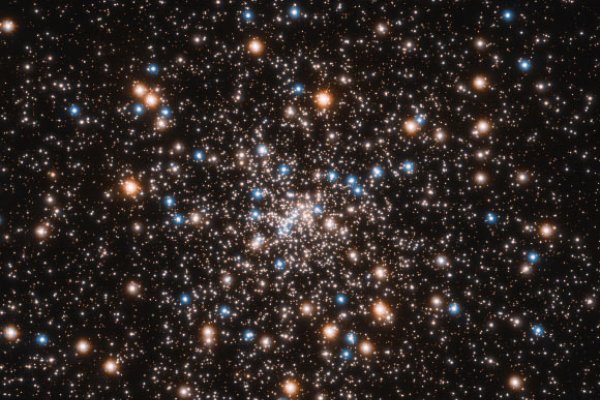Globular clusters are the most massive and oldest star clusters in the Universe. They can contain up to 1 million of them. The chemical composition of these stars, born at the same time, shows anomalies that are not found in any other population of stars. Explaining this specificity is one of the great challenges of astronomy. After having imagined that supermassive stars could be at the origin, a team from the Universities of Geneva and Barcelona, and the Institut d’Astrophysique de Paris (CNRS and Sorbonne University) believes it has discovered the first chemical trace attesting to their presence in globular proto-clusters, born about 440 million years after the Big Bang. These results, obtained thanks to observations by the James-Webb space telescope, are to be found in Astronomy and Astrophysics.
Monsters with very short lives
A team from the universities of Geneva (UNIGE) and Barcelona, and the Institut d’Astrophysique de Paris (CNRS and Sorbonne University) has made a new advance in the explanation of this phenomenon. In 2018, it had developed a theoretical model according to which supermassive stars would have «polluted» the original gas cloud during the formation of these clusters, enriching their stars with chemical elements in a heterogeneous manner. ‘‘Today, thanks to the data collected by the James-Webb Space Telescope, we believe we have found a first clue of the presence of these extraordinary stars,’’ explains Corinne Charbonnel, a full professor in the Department of Astronomy at the UNIGE Faculty of Science, and first author of the study.
These celestial monsters are 5 000 to 10 000 times more massive and five times hotter at their centre (75 million °C) than the Sun. But proving their existence is complex. ‘‘Globular clusters are between 10 and 13 billion years old, whereas the maximum lifespan of superstars is two million years. They therefore disappeared very early from the clusters that are currently observable. Only indirect traces remain,’’ explains Mark Gieles, ICREA professor at the Institute of Cosmos Sciences of the University of Barcelona (ICCUB-IEEC) and co-author of the study.
Revealed by light
Thanks to the very powerful infrared vision of the James-Webb telescope, the co-authors were able to support their hypothesis. The satellite captured the light emitted by one of the most distant and youngest galaxies known to date in our Universe. Located at about 13.3 billion light-years, GN-z11 is only a few tens of millions of years old. In astronomy, the analysis of the light spectrum of cosmic objects is a key element in determining their characteristics. Here, the light emitted by this galaxy has provided two valuable pieces of information.
‘‘It has been established that it contains very high proportions of nitrogen and a very high density of stars,’’ says Daniel Schaerer, associate professor in the Department of Astronomy at the UNIGE Faculty of Science, and co-author of the study. This suggests that several globular clusters are forming in this galaxy and that they still harbour an active supermassive star. ‘‘The strong presence of nitrogen can only be explained by the combustion of hydrogen at extremely high temperatures, which only the core of supermassive stars can reach, as shown by the models of Laura Ramirez-Galeano, a Master’s student in our team,’’ explains Corinne Charbonnel.
These new results strengthen the international team’s model. The only one currently capable of explaining the abundance anomalies in globular clusters. The next step for the scientists will be to test the validity of this model on other globular clusters forming in distant galaxies, using the James-Webb data.



